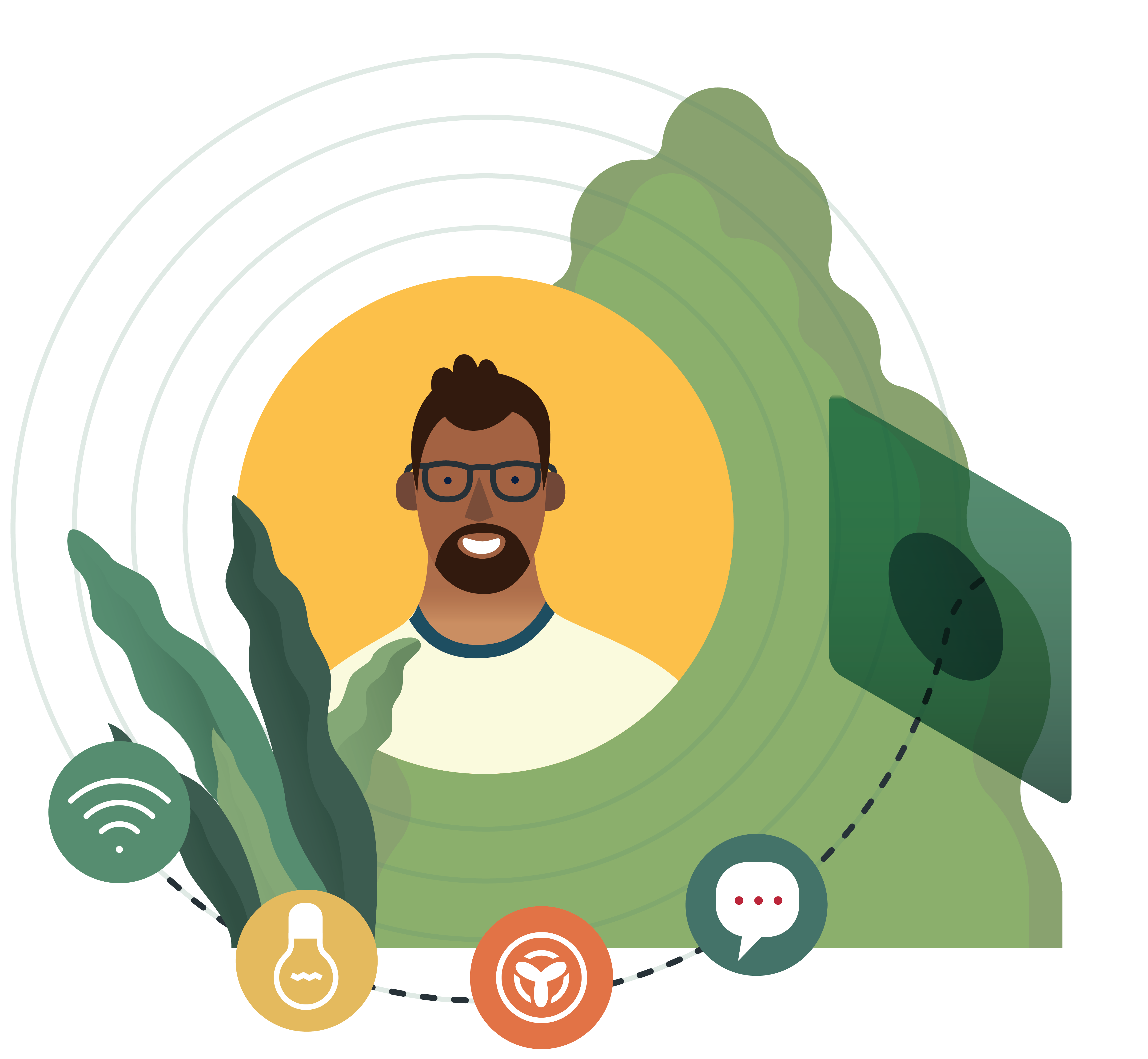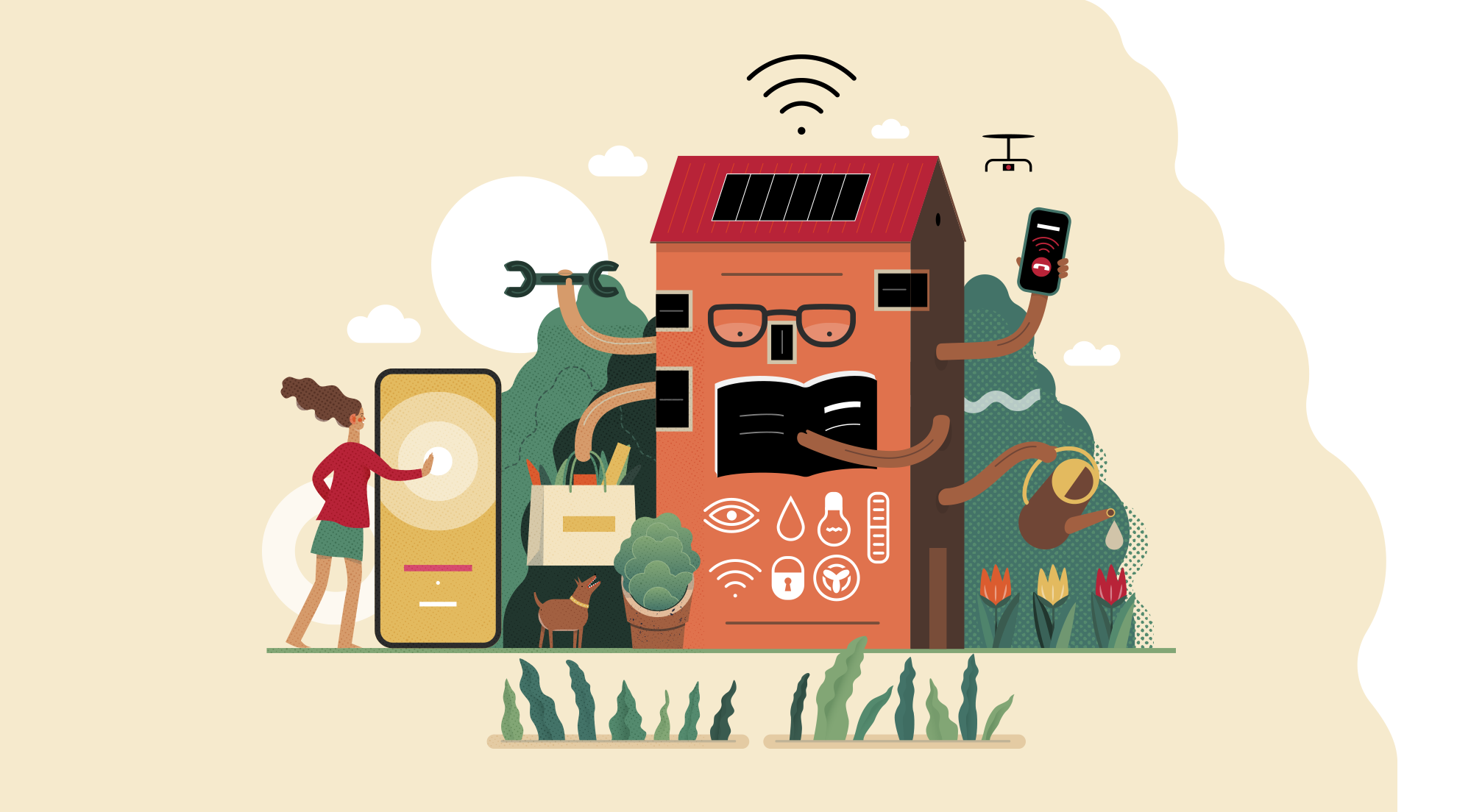It’s a term often bandied about in popular culture, but what is a ‘smart home’ anyway?
Simply put, a smart home is any number of products or applications designed to help you run your household and improve your quality of life. Smart home technology brings the Internet of Things (IoT) — the sphere of devices that connect to the web — into the average consumer’s abode.
Honestly, your home is probably already smarter than you realize. Probably the most buzzed-about (and most controversial) are virtual assistants, like Amazon’s Alexa and Google’s Google Assistant, invisible secretaries always keeping an ear out in case they’re needed. But there is so, so much more. Smart home technology includes large appliances, entertainment systems, and even cute little guys like robotic vacuums. Read on for a rundown of smart home accessories — along with a word of caution on our new robot overlords.
What’s In a Smart Home?
Ideally, a true smart home would be a single, fully interconnected system that would allow the resident to control all aspects of their home, whether at home or remotely. This, however, is still generally aspirational — most pieces of smart home technology come individually, as modular parts that can be assembled to create some kick-butt automation. Smart home devices come in all different shapes and sizes and can be used throughout the home. For example, there are smart refrigerators that can show you the inside of your fridge at a moment’s notice, order food, or even track dates. At the other end of the spectrum are things like smart plugs, individual adapters that will let you put lamps on a schedule. Smart home technology ranges all over the house, too — from the family room, to the utility room, where an IoT thermostat or water heater monitors and regulates usage, energy efficiency and potential issues. There are even smart devices to improve your health, like beds and bathroom scales that collect biometric data.
Robot Overlords?
Not everyone is thrilled at the idea of digitizing their homes, however. While many are eager to streamline their lives and add a little high-tech gloss, some are concerned with the prospect of allowing large corporations to handle such personal data. And with good reason — inviting sensors into your home by definition means that someone or something is watching at all times. Knowing how IoT devices and personal assistants work — by listening, collecting data, learning your habits — can begin to feel a bit dystopian for some people.
Of course, corporate data collection is not the only concern. Many home networks, as well as the devices they encompass, aren’t as secure as they ought to be. It’s entirely possible that weaknesses in smart home devices could be exploited to allow spyware to invade your home.

What’s Outside of a Smart Home
All the technology discussed so far is only half of the puzzle — smart home technologies can also manage the outside of your home. Most of these focus on home security, with video cameras, doorbells to help you track activity outside.
These products will often allow you to stream video to your phone, so you can check on the home front while you’re away. Some, triggered by motion sensors, record video in short bursts so you can see who’s at your door from your phone or computer. Others provide intercom capabilities so you can speak to someone at your door without opening it. For extra security, there are devices that will ward off would-be burglars with the sounds of a large dog barking.
Of course, home security isn’t the full story. The Internet of Things also wants to help you with your yard work, hawking such devices as remote-controlled sprinkler systems, pool pH monitors, and even free-range Roombas–robotic lawnmowers.
Virtual Assistants
No smart home is complete without the virtual assistant, which acts as command-central for all of your home’s internet-connected devices. Of course, it’s possible to control these things from your phone but voice-command devices like Alexa and Google Assistant keep your hands free, and, let’s be honest, feel sleeker and more sci-fi. Depending on how much work you’re willing to put in to set it up, your virtual assistant can be used to control almost any smart device, appliance, monitor, outlet and feature in your home.



